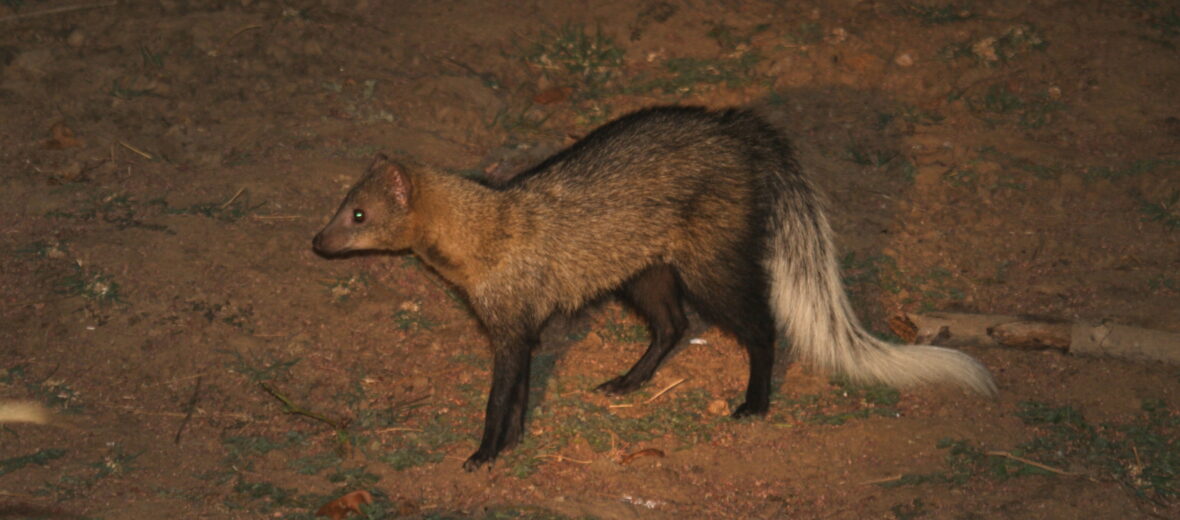
There are 33 known mongoose species and the largest of them all is the white-tailed. These critters may look harmless, but they are fierce predators. They can be found in Africa – south of the Sahara, and in the southern portion of the Arabian Peninsula, in the Middle East. The white-tailed mongoose prefers semi-deserts and savanna woodlands. Due to their stable numbers, this species of mongoose is listed as Least Concern by the IUCN.
First the Stats…
Scientific name: Ichneumia albicauda
Weight: Up to 9.3 lbs.
Length: Up to 2.3 feet
Lifespan: Up to 20 years
Now on to the Facts!
1.) These mongooses prey mostly on insects, but will also prey on rodents, birds, frogs, lizards, snakes, eggs, fruits, and berries.
2.) White-tailed mongooses are nocturnal (active at night), with occasional crepuscular (active at dawn and dusk) habits.
3.) A group of mongooses is sometimes called a ‘pack’, ‘mongeese’, or ‘mongaggle’.
4.) Mongooses have a very high resistance to snake and scorpion venom. This is due to mutations in the nicotinic acetylcholine receptors. These modified receptors prevent the snake venom α-neurotoxin from binding.
5.) White-tails are also terrestrial (spend most of their lives in trees).
But wait, there’s more on the white-tailed mongoose!
6.) The white-tailed mongooses usually just take over abandoned burrows; choosing not to dig their own.
7.) During the mating season they will emit high-pitched sounds called “giggling”
Did you know…?
The story, “Rikki-Tikki-Tavi” features a mongoose that saves a family from a venomous snake.
8.) Females birth up to 4 pups that are born blind.
9.) The genus name, ‘Ichneumia’, comes from the Greek word ichneumon, which translates to ‘tracker’.
10.) They walk with a similar gait to that of a dog. But they do so with their head hung low and shoulders low to the ground.
Now a Short White-Tailed Mongoose Video!
Also, check out the Critter Science YouTube channel. Videos added frequently!
Want to suggest a critter for me to write about? Let me know here.



